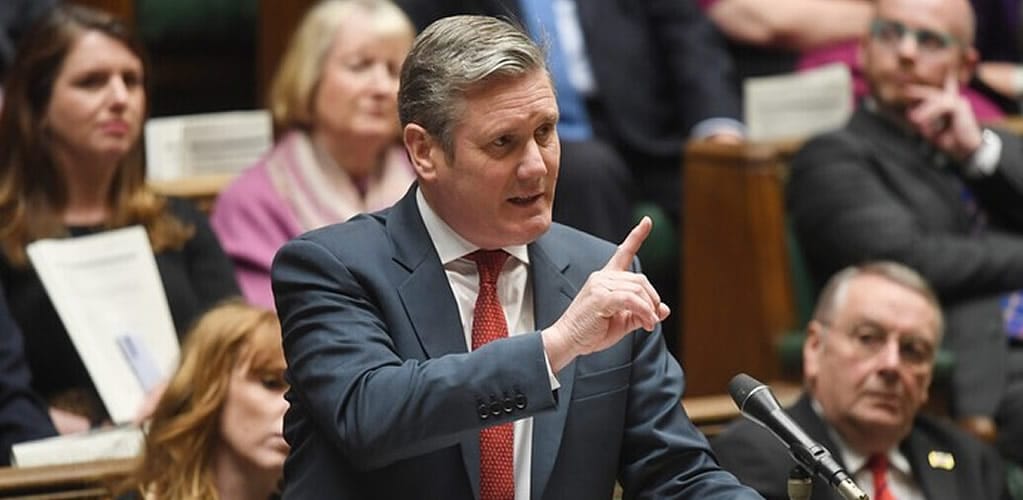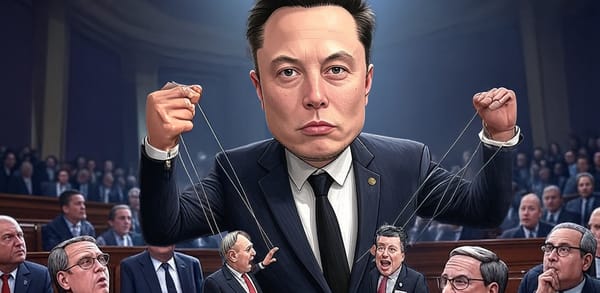What Keir Starmer could learn from Neil Kinnock to capitalise on Boris Johnson’s woes.
Kinnock lost two elections as Labour leader. Starmer could learn a lot from his successes and failures.

Kinnock lost two elections as Labour leader. Starmer could learn a lot from his successes and failures.
First published: June 2022.
Although prime minister Boris Johnson is suffering a potentially career-ending crisis after only narrowly surviving a confidence vote in his leadership, his struggles don’t necessarily appear to be translating into a surge for the Labour opposition.
“People continue to prefer Boris Johnson as prime minister than Keir Starmer.”
A recent poll suggested that even after months of scandal, people continue to prefer Johnson as prime minister than Labour’s Keir Starmer.
When it comes to who would make the best Prime Minister, Johnson has returned to lead Starmer by 2 percentage points, despite the vote of confidence held on Monday.
— Opinium (@OpiniumResearch) June 11, 2022
28% think Johnson would be best (+2)
26% think Johnson would be best (-2)
35% said "None of these" pic.twitter.com/iwdsGfpVgK
In plotting a path out of his stalemate, Starmer could do worse than look back at a particular period in Labour history – the tenure of Neil Kinnock between 1983 and 1992.
Like Starmer, he had been faced with rebuilding the Labour party in the aftermath of a particularly crushing general election defeat. Indeed, before 2019, the worst general election defeat for Labour since the 1930s was 1983, when the party was on the receiving end of a Margaret Thatcher landslide under Michael Foot’s stewardship.
Like Kinnock, therefore, Starmer has been handed responsibility to cultivate a more electable and popular image for Labour.
But Kinnock was defeated in two general elections, losing his last chance to become prime minister in 1992. Starmer, obviously, would like to do better. These four lessons from Kinnock’s highs and lows should therefore be noted.
1. Get a strong economic package together
Being able to trust a party to manage the economy is regularly identified as a crucial factor when voters decide who to support in an election.
However, on this critical issue, Kinnock was repeatedly found wanting. The public was unwilling to trust his economic proposals over those put forward by the Conservatives. Indeed, many have argued that Labour’s moderately redistributive shadow budget of 1992 cost Labour badly at the polls. It was perceived as being unaffordable and incautious by significant numbers of floating voters.
This history may explain Starmer’s apparent strategy of taking a more cautious approach to economic management than was seen during the tenure of his predecessor, Jeremy Corbyn. The goal seems to be to reassure voters that Labour is a safe pair of hands rather than trying anything too ambitious that might frighten wavering voters who were concerned about the affordability and feasibility of the party’s 2019 economic proposals.
“Labour will need to offer a clear and radical alternative.”
Following Kinnock’s 1992 defeat, Labour embraced a safety-first approach to economic competence and taxation. This was evident during the first two years of the Tony Blair government when Labour adhered to Conservative public spending proposals.
However, the contemporary situation is very different from that of the mid-1990s when the economy was expanding, and for Starmer, there is a risk of throwing out the baby with the bathwater. To win voters in so-called “left-behind regions”, Johnson’s Conservatives have embraced a “levelling up” rhetoric, and with this, a more centrist economic direction. Labour will need to offer a clear and radical alternative. And the desire for a new economic approach is only likely to intensify with the mounting cost of living crisis.
2. Get a grip on party divisions
Kinnock came from Labour’s radical left and was a constant thorn in the side of the Jim Callaghan government, which he refused to join. However, after Labour lost in 1979, a split emerged on the left. Kinnock was a leading figure on the soft left, close to his predecessor, Michael Foot. His first term as leader of the opposition was dominated by clashes with the hard left.
“Divided parties generally don’t win elections.”
The radical left re-emerged as dominant after the election of Corbyn as party leader in 2015. However, it has been striking how rapidly the left of the party has been marginalised by Starmer, who has even suspended Corbyn from the parliamentary party. Indeed, what cannot be disputed is that the moderates have retaken control of the party and sidelined the left, in a much quicker manner than Kinnock in the 1980s.
Despite the progress apparently made, the lesson from the Kinnock era is that divided parties generally don’t win elections. It is still unclear whether alienating the left of his party rather than working to truly unite the various factions will cost Starmer votes.

Neil Kinnock at the Senedd, Cardiff Bay. | Flickr/Neil Schofield
3. Let your personality show
Kinnock was undoubtedly a dynamic and colourful politician, the outstanding orator of his age. However, his image became carefully managed to the extent that the real Kinnock was smothered in the run-up to the 1992 election.
Starmer was seemingly selected after the crushing defeat in 2019 precisely because he was seen as “safe”. But with safe comes the risk of being called boring.
“A more relaxed and engaging Starmer.”
In hindsight, Kinnock’s reputation for having a colourful personality was seen as an under-used asset. If he’d resisted such rigid media management of his character, he might have had greater electoral success. Perhaps Starmer also needs to adopt a more relaxed and engaging approach, although doubts remain as to whether he has that kind of personality.
4. Be bold in the face of the challenge
Starmer arguably faces a greater electoral challenge than Kinnock. In Kinnock’s day, Labour still dominated Scottish politics along with its traditional heartland seats in the North and Midlands. All of that has since changed. Now, the parliamentary arithmetic suggests Starmer couldn’t win an election outright.
One strategy may be to show similar (or even greater) ruthlessness as Kinnock when he undertook a seismic review process after 1987. He ditched all kinds of unpopular policies in the hope of securing a majority. He did not succeed but could be said to have laid the foundations for Blair’s eventual electoral success in 1997.
“Succeed where Kinnock failed.”
Some modernisers felt Kinnock went too slow and was too cautious in this review. If Starmer is to have an outside chance of becoming prime minister, he may have to be bolder, but will also have to gamble that he can take the party with him. While winning an outright majority remains unlikely, polling evidence does indicate the possibility that he could lead the biggest party in a hung parliament, and this is perhaps his most realistic option of reaching Downing Street at the moment.
Starmer ultimately aspires to succeed where Kinnock failed. But there are worrying undercurrents. His personal polling is lukewarm. In these more volatile and impatient times, Starmer will almost certainly not have the comfort of the almost nine years as opposition leader that Kinnock had. His party would oust him long before that. This adds a sense of urgency. Time could be running out for him to turn things around before the next general election.

— AUTHORS —

|
▫ Ben Williams, Lecturer in Politics and Political Theory, University of Salford. |

|
▫ Kevin Hickson, Senior Lecturer in Politics, University of Liverpool. |
Sources
- Text: This piece was originally published in The Conversation and re-published in PMP Magazine on 17 June 2022. | The authors write in a personal capacity.
- Cover: Instagram/UK Parliament. - Keir Starmer. | 27 April 2022. (Licensed under a Creative Commons Attribution-ShareAlike 4.0 International License.)








[Read our Comments Guidelines]